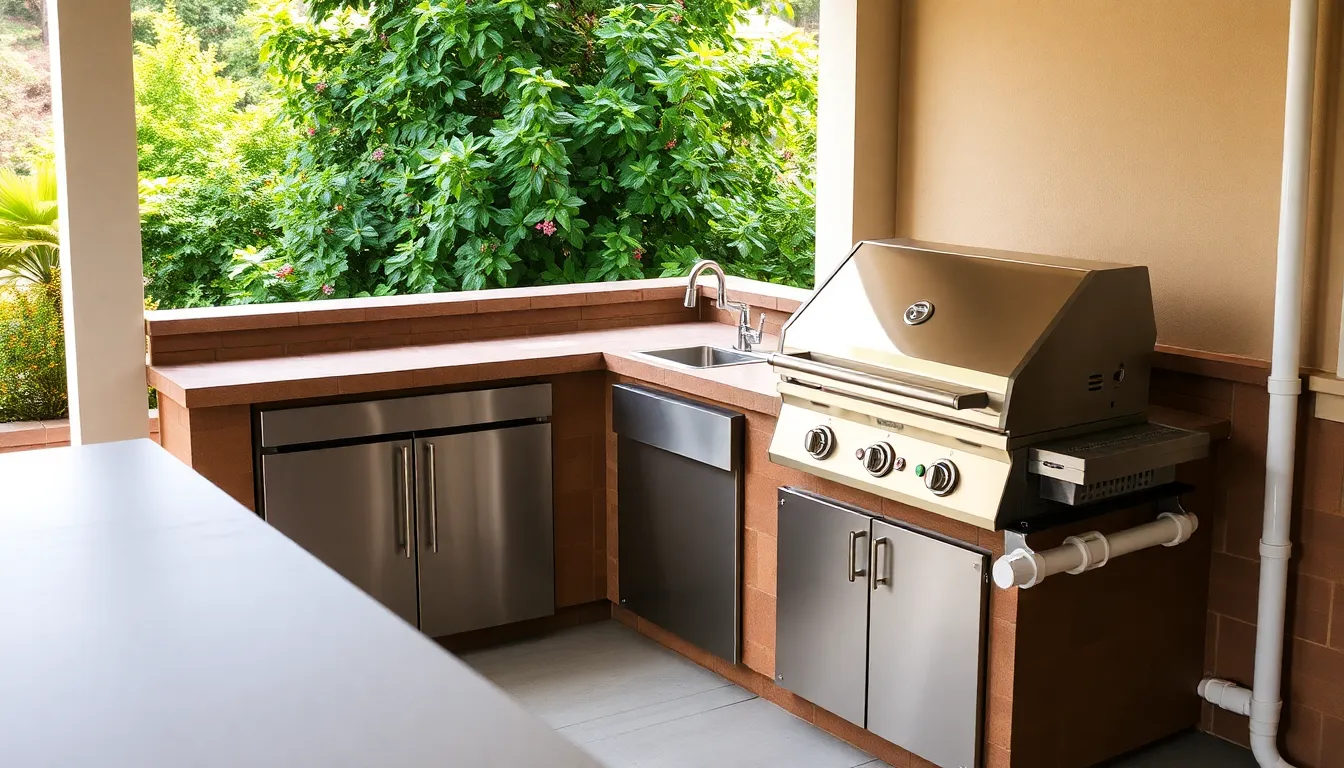Imagine hosting a summer barbecue in your outdoor kitchen, the aroma of grilled vegetables mingling with the sounds of laughter and clinking glasses. But what happens when the plumbing isn’t up to par? Planning plumbing for outdoor kitchens is crucial for ensuring that your gatherings go off without a hitch. With the right setup, homeowners can enjoy seamless access to water, drainage, and even gas lines for cooking.
As outdoor living spaces gain popularity, understanding the intricacies of plumbing design becomes essential. From choosing the right materials to considering local codes, a well-thought-out plumbing plan can elevate your outdoor cooking experience. Dive into the essential tips and insights that will help you create a functional and enjoyable outdoor kitchen, setting the stage for countless memorable moments.
Understanding Outdoor Kitchen Plumbing
Outdoor kitchen plumbing requires careful planning to enhance functionality and ensure a seamless cooking experience. Establishing a proper plumbing system allows easy access to water, drainage, and gas lines, essential for preparing meals outdoors.
Importance of Proper Plumbing Design
Proper plumbing design plays a critical role in the functionality and convenience of an outdoor kitchen. A well-thought-out water supply system ensures adequate pressure and flow for sinks, grills, and other appliances. An efficient drainage system prevents water pooling and minimizes the risk of damage or unpleasant odors. Additionally, incorporating gas line services within the design supports outdoor appliances like gas grills and burners, ensuring safe and reliable operation.
Common Plumbing Challenges
Homeowners often face several common plumbing challenges when setting up an outdoor kitchen.
- Clogged Drains: Clogs can arise from food debris or grease, requiring regular maintenance through drain cleaning and repair.
- Water Pressure Issues: Inadequate water pressure may hinder the performance of faucets and appliances, necessitating adjustments to the plumbing layout.
- Freezing Pipes: In cooler climates, plumbing pipes may freeze, highlighting the importance of proper insulation and placement.
- Fixture Placement: Poorly positioned sinks and appliances can lead to inefficient workflows, leading to frustration during meal preparation.
Addressing these challenges early in the planning stage leads to more enjoyable outdoor cooking experiences.
Key Considerations for Planning Plumbing

Planning plumbing for outdoor kitchens involves several crucial aspects to guarantee seamless functionality and enjoyment. Properly addressing water supply, drainage, and piping can significantly enhance the outdoor cooking experience.
Location and Layout
Location and layout play a significant role in outdoor kitchen plumbing. Position appliances, sinks, and grills near existing water lines to minimize installation costs. Consider traffic patterns when determining placements, ensuring easy access for users. Also, account for zoning regulations and local codes, which may dictate plumbing standards. Ensuring efficient distances between plumbing fixtures aids in maintaining adequate water pressure for optimal operation.
Water Supply and Drainage Solutions
Water supply and drainage solutions are vital for outdoor kitchens. Access to a reliable water source is necessary for sinks and dishwashers. Utilize reputable materials, such as PVC or PEX pipes, for durability and freeze-resistance, especially in colder months. For drainage, install a sloped trench for efficient water runoff, preventing standing water and odors. Incorporate a proper backflow prevention system to avoid contamination of the potable water supply.
Essential Plumbing Features
Planning the plumbing for outdoor kitchens involves incorporating key features that enhance accessibility and functionality.
Sinks and Faucets
Sinks and faucets play a vital role in outdoor kitchens. A high-quality sink, positioned for easy access, simplifies food preparation and cleanup. Selecting a faucet with suitable water pressure ensures efficient operation, even with varying water supply demands. Installing a dual-basin sink can facilitate multitasking, while a faucet with a pull-down sprayer provides flexibility for washing and rinsing. Choosing weather-resistant materials for faucets and fixtures can prevent corrosion and extend longevity.
Refrigeration and Ice Makers
Refrigeration and ice makers add convenience to outdoor kitchens. Planning for these appliances requires adequate plumbing connections for seamless installation. An outdoor-rated refrigerator, positioned strategically, allows easy access to chilled drinks and ingredients. Connecting an ice maker to the plumbing ensures a continuous supply of ice, which is essential for entertaining. Utilizing insulated lines can help maintain temperature control and prevent freezing in colder months. Proper drainage for refrigeration units is also necessary to avoid water pooling and enhance overall functionality.
Maintenance Tips for Outdoor Kitchen Plumbing
Maintaining outdoor kitchen plumbing ensures functionality and longevity. Regular upkeep prevents issues and enhances the outdoor cooking experience.
Seasonal Maintenance Checklist
- Inspect Water Lines: Check for leaks or cracks in outdoor water lines. Damaged lines can lead to substantial water loss or pressure issues.
- Drainage System Check: Ensure drainage systems are clear of debris. Regular cleaning prevents clogging and unpleasant odors.
- Evaluate Fixtures: Examine faucets and sinks for signs of wear. Replace any damaged fixtures promptly to avoid leaks.
- Winter Preparation: Insulate pipes before colder months to prevent freezing. Consider shutting off outdoor water supplies during winter.
- Test Gas Lines: Ensure gas lines function properly. Conduct a safety check for leaks to ensure peace of mind when using gas appliances.
Troubleshooting Common Issues
- Clogs: Use a plunger or plumbing snake to address stubborn clogs. For persistent issues, consider professional drain cleaning services.
- Low Water Pressure: Investigate fixtures for mineral buildup. Cleaning aerators and showerheads often restores proper flow.
- Leaking Fixtures: Tighten or replace washers in leaking faucets. Persistent leaks may necessitate professional plumbing repair services.
- Unpleasant Odors: Inspect the drainage system for blockages. Clean traps and ensure vents are functioning to eliminate odors.
- Temperature Fluctuations: If water temperature is inconsistent, check the water heater or connections. Regular maintenance can prevent operational issues.
Integrating these maintenance tips into regular outdoor kitchen care leads to a more enjoyable cooking environment and peace of mind for homeowners.
Conclusion
Planning plumbing for outdoor kitchens is essential for creating a functional and enjoyable space. By focusing on proper layouts and reliable materials homeowners can avoid common issues that disrupt the cooking experience. A well-executed plumbing design not only enhances convenience but also ensures safety and efficiency.
Incorporating maintenance practices into regular routines will help keep the plumbing system in top shape. This attention to detail allows for seamless summer gatherings filled with memorable moments. With thoughtful planning and execution homeowners can transform their outdoor kitchens into the perfect entertaining hub.
Frequently Asked Questions
Why is proper plumbing important for outdoor kitchens?
Proper plumbing is crucial for outdoor kitchens as it ensures seamless access to water, drainage, and gas lines. A well-designed plumbing system enhances the cooking experience and prevents issues like clogged drains and low water pressure.
What should I consider when planning plumbing for my outdoor kitchen?
Key considerations include the layout and location of sinks, grills, and appliances near existing water lines. Traffic patterns and local zoning regulations should also be taken into account to ensure functionality and compliance.
What materials are best for outdoor kitchen plumbing?
Durable materials like PVC or PEX pipes are ideal for outdoor kitchen plumbing. They are resistant to freezing temperatures and help prevent leaks, contributing to a reliable plumbing system.
How can I maintain my outdoor kitchen plumbing?
Regular maintenance includes inspecting water lines for leaks, clearing drainage systems of debris, checking fixtures for wear, insulating pipes for winter, and testing gas lines for safety to ensure smooth operation.
What common plumbing challenges do outdoor kitchens face?
Common challenges include clogged drains, low water pressure, freezing pipes, and fixture placement issues. Addressing these early in the planning stage can significantly improve the cooking experience.
Why are sinks and faucets important in outdoor kitchens?
Sinks and faucets are essential for food preparation and cleanup in outdoor kitchens. Choosing high-quality, weather-resistant fixtures enhances durability and efficiency, making cooking and entertaining easier.
How do I ensure proper drainage in my outdoor kitchen?
Implementing sloped trenches and backflow prevention measures is crucial for effective drainage. This helps prevent standing water and maintains the safety of your potable water supply.
Are refrigeration and ice makers feasible for outdoor kitchens?
Yes, refrigeration and ice makers can be great additions to outdoor kitchens. However, they require adequate plumbing connections and proper drainage to prevent water pooling and ensure functionality.

